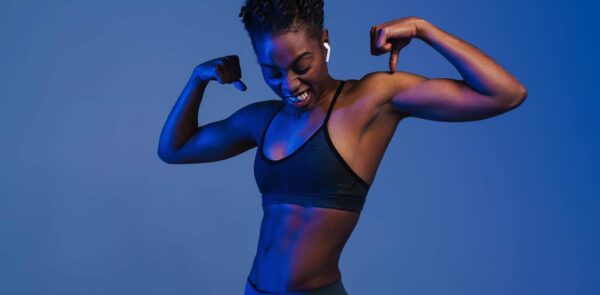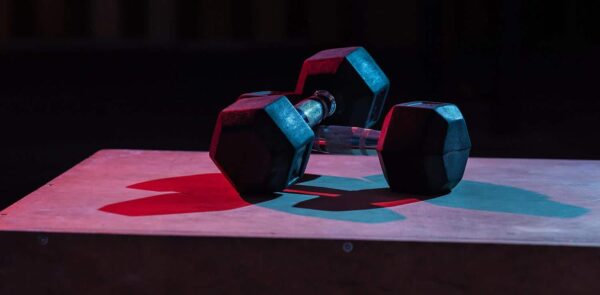
Jump to a section:
When was the last time you bought a new pair of running shoes or a tennis racket? If you’re anything like the modern consumer, you probably did some online research, read a few customer reviews, watched a video or two, then ventured either online or into a store to check it out for yourself. That journey—from the moment you realize you need (or want) new sports equipment, all the way to the thrill of taking it out for a test drive—is what we call the customer experience (CX).
For sports equipment manufacturers and retailers, delivering an outstanding customer experience is both an art and a science. On one hand, you’re catering to people’s passions and hobbies—emotions run high when it comes to sport. On the other, you need to manage complex supply chains, constantly evolving products, and increasingly digital consumers. The stakes are high, and competition is fierce: research shows that 73% of consumers say a good experience is key in influencing their brand loyalties, and in the world of sports gear, loyalty can translate into long-term, profitable relationships.
Understanding the Modern Sports Consumer
The Shift in Expectations
The first step to building a great customer experience is understanding who you’re dealing with. Today’s sports enthusiasts aren’t just looking for a product; they’re searching for a comprehensive experience that resonates with their aspirations, lifestyle, and performance goals.
- Digitally Savvy: Consumers read product reviews, watch YouTube unboxings, and compare prices online before setting foot in a store—or purchasing straight from a website.
- Experience Over Products: A high-quality product is crucial, but an engaging, personalized experience can be the deciding factor that clinches a sale.
- Eco-Conscious and Health-Conscious: Many athletes and hobbyists are increasingly mindful of sustainability and well-being. They want brands that align with their values, whether that’s using recycled materials or supporting local communities.
Key Pain Points
To deliver an excellent CX, you also need to identify and address common consumer pain points:
- Information Overload: There are countless brands and variations of sports equipment, creating confusion about what’s truly best for an individual’s needs.
- Sizing and Fit Concerns: Whether it’s a pair of hiking boots or a baseball glove, getting the right fit is critical—especially when shopping online.
- Complex Return Processes: A seamless return or exchange policy is essential. If returning an item is too difficult or complicated, consumers can become frustrated and might not shop with you again.
- Lack of Support or Expertise: Shoppers often have specific performance goals or injury concerns; if they can’t find educated staff or online support, they may turn to a competitor who can guide them.
Crafting a Seamless Omnichannel Experience
The Power of Omnichannel
Today’s customer doesn’t think in terms of “online” vs. “in-store.” They move fluidly between websites, social media platforms, mobile apps, and physical locations. Omnichannel means offering a consistent, cohesive experience no matter where or how a consumer interacts with your brand.
- Stats to Note: A recent study found that 73% of customers use multiple channels during their shopping journey. Moreover, multichannel shoppers tend to spend more—up to 10% more in-store and nearly 40% more online compared to single-channel shoppers.
Tips for an Effective Omnichannel CX
- Consistent Branding and Messaging: Make sure everything—your website, social media pages, store displays, and packaging—feels like part of the same story. If you’re highlighting sustainability in your Facebook ads, reflect that in-store with signs or displays showcasing eco-friendly materials.
- Unified Customer Data: Use Customer Relationship Management (CRM) software to track customer interactions across platforms. If someone adds a basketball hoop to their online cart but doesn’t purchase, your in-store staff should be able to see that interest and follow up.
- Click and Collect: Offer a “buy online, pick up in-store” option. This satisfies customers who like the convenience of online shopping but also want to try on or test their gear before taking it home.
- In-Store Tech: Integrate tablets, interactive kiosks, or augmented reality (AR) features that let people visualize how certain equipment might fit into their lifestyle—think “smart mirrors” or “virtual tennis racket demos.”
Bridging Online and Offline Touchpoints
- Online to Offline (O2O) Marketing: Use geo-targeted ads or push notifications to invite nearby customers to your store for exclusive demos or product launches.
- Personalized In-Store Service: Train staff to quickly access a customer’s online wish list or browsing history (when available) to offer personalized assistance.
- Store Layout and Experience: Reflect your online brand in the store’s ambiance. If your social channels are energetic and playful, infuse that energy into store displays and product demonstrations.
Personalization: Meeting Each Athlete Where They Are
Why Personalization Matters
Personalization goes beyond addressing someone by their first name in an email. It’s about understanding their unique goals and preferences—do they run marathons, or do they simply need comfortable shoes for walks? Are they looking for the latest high-tech golf clubs, or do they want budget-friendly gear for weekend pick-up games?
Stats to Note: Studies show that 80% of consumers are more likely to purchase from a brand that offers a personalized experience. In sports retail, personalization can significantly improve product recommendations, training tips, and post-purchase support.
Strategies for Effective Personalization
- Tailored Product Suggestions
- Online: Use algorithms to recommend relevant products or gear based on past purchases or browsing behavior. For instance, if a customer recently bought a mountain bike, you might suggest a new helmet or maintenance kit.
- In-Store: Arm sales associates with mobile devices showing customer profiles and preferences so they can suggest items that make sense for each individual.
- Segmented Marketing Campaigns
- Group customers by sport, skill level, or region. For example, target runners in colder climates with ads for thermal running gear as winter approaches.
- Customized Content
- Offer free training guides, fitness tips, or sport-specific articles on your website. If a visitor has shown interest in tennis, direct them to a landing page focusing on improving their serve, followed by product recommendations.
- Reward Loyalty
- Implement a loyalty program that recognizes repeat purchases and brand advocates. Provide exclusive experiences—like VIP store events or early access to new product launches—for your most dedicated customers.
Building Trust Through Transparency and Sustainability
The Value of Transparency
Sports equipment shoppers are increasingly value-driven. They want to know where materials are sourced, how workers are treated, and whether the products align with their personal ethics. If your brand can communicate transparency—from the manufacturing process to your carbon footprint—you’ll stand out in a crowded market.
- Proof Points: Add content on your website highlighting the production process. Include videos or images from your factories, sustainability reports, and fair labor practices.
Integrating Sustainability into CX
- Eco-Friendly Materials and Packaging
- Use recyclable or biodegradable packaging. If you’re manufacturing items like yoga mats, consider renewable materials like natural rubber.
- Take-Back and Recycling Programs
- Encourage customers to return old or broken gear for recycling or repurposing. In exchange, offer store credit or discounts on new purchases.
- Social Good Initiatives
- Partner with local sports programs or international charities to provide underserved communities with equipment or training. Share these stories in your marketing channels to let customers see the impact of their support.
- Highlight Eco-Certifications
- Certifications like Fair Trade, Global Organic Textile Standard (GOTS), or B Corp can validate your commitment to sustainability.
In-Store Experience: Elevating the Physical Touchpoint
While online shopping is convenient, many sports enthusiasts still love the hands-on aspect of visiting a store. They want to feel the grip of a new baseball bat or test the cushioning of a running shoe. Here’s how you can take your in-store experience to the next level:
Store Layout and Design
- Interactive Displays: Set up mini-courts, putting greens, or treadmill stations for customers to try out equipment in a realistic setting.
- Smart Signage: Use QR codes that link to online product demos or reviews. This helps merge the physical and digital realms, giving shoppers more info at their fingertips.
Expert Staff and Training
- Hire Passionate Experts: Staff members who are genuinely interested in sports can provide personalized advice, boosting customer confidence in their purchases.
- Ongoing Training: Ensure employees stay updated on product specs, new tech innovations, and brand history so they can offer knowledgeable insights.
- Engagement Over Sales: Encourage your staff to focus on helping and educating, rather than pushing a sale. An authentic recommendation or tip can build loyalty.
Event Hosting and Community Building
- Workshops and Clinics: Offer free or low-cost sessions on topics like “Running Injury Prevention” or “Golf Swing Basics.” This transforms your store into a community hub.
- Team Sponsorships: Sponsor local sports teams or host in-store meetups. This builds a loyal community around your brand, driving word-of-mouth marketing.
Digital Innovations: From AR Try-Ons to Virtual Coaches
With the rise of digital technology, sports brands can deliver experiences that were unimaginable just a decade ago. Integrating cutting-edge tools can revolutionize how customers shop, learn, and connect with your brand.
Augmented Reality (AR) and Virtual Reality (VR)
- AR Fittings: Imagine a customer pointing their phone at their foot and instantly getting size recommendations for a particular running shoe model. This type of AR solution helps reduce fit issues and return rates.
- VR Simulations: Some high-end golf retailers offer VR simulators that let you virtually “try” clubs in a variety of courses. This immersive experience can be a huge differentiator.
Mobile Apps and Wearables
- Workout Tracking and Gear Recommendations: A branded mobile app that syncs with smartwatches or fitness trackers can collect performance data and recommend gear upgrades—like new shoes when the old ones hit a certain mileage.
- Real-Time Support: Integrate chatbots or live chat features to answer quick questions. For advanced queries, route them to human experts or coaches.
Online Communities and Content
- Forums and Groups: Create brand-sponsored online communities where athletes can share stories, ask for advice, or celebrate milestones.
- Exclusive Content Libraries: Offer advanced sports training videos or product how-to guides for registered users. This not only drives sign-ups but also positions your brand as a knowledge hub.
Post-Purchase Engagement: Keeping the Momentum
Often, businesses pour their energy into sealing the deal and then move on. But your relationship with the customer shouldn’t stop the moment they buy a new basketball or fishing rod. Post-purchase engagement is vital to nurturing loyalty and long-term relationships.
Thank-You and Onboarding
- Personalized Emails: Send a warm thank-you note right after purchase. Include tips or best practices—like “How to Properly Break in Your Baseball Glove” or “Essential Maintenance Tips for Your New Mountain Bike.”
- Unboxing Experience: Consider the packaging. Opening a new piece of sports equipment can be as exciting as a birthday gift—if done right. Including small freebies (like stickers, discount coupons, or a personal note) elevates the experience.
Feedback and Reviews
- Request Reviews: Ask for feedback when the product has arrived or after a set period, such as “How was your first run in your new shoes?” This helps you gather genuine testimonials.
- Act on Feedback: Show customers you’re listening by responding to their reviews—positive or negative—and incorporating suggestions into future product iterations or CX improvements.
Maintenance and Support
- Repair or Tune-Up Services: Offer discounted or free tune-ups for certain equipment. This not only keeps products performing well but also invites repeat store visits.
- How-To Guides and Videos: Share monthly or seasonal newsletters with tips on caring for their gear. People appreciate brands that help them extend the life of their purchases, especially if that gear was a significant investment.
Leveraging Data and Analytics for Continuous Improvement
At the heart of every great CX strategy is data—understanding what’s working and what isn’t. By gathering information on customer behavior, feedback, and sales performance, sports equipment brands can continually refine their approach.
Tracking Key Metrics
- NPS (Net Promoter Score): Measures the likelihood of customers recommending your brand to others.
- CLV (Customer Lifetime Value): The total revenue a single customer is expected to generate over the course of their relationship with you.
- Conversion Rates: Track how many website visitors turn into buyers and how many in-store browsers make a purchase.
- Retention Rates: Observe how often customers return to purchase additional items—or, conversely, how quickly they disappear.
Employing CRM Tools
- Centralized Customer Data: Combine in-store, online, and social media interactions. This helps you spot trends—like a spike in demand for certain sports gear.
- Automated Campaigns: Use data to trigger personalized emails or text messages. For example, after six months, you might send a reminder suggesting a shoe replacement or a new string for a tennis racket.
A/B Testing
- Website Layout: Experiment with different page designs or checkout flows to see which yields higher conversions.
- Email Marketing: Try varying subject lines or email send times. Track open rates, click-through rates, and subsequent purchases.
Training Your Team for CX Excellence
All the technology and data in the world won’t matter if your team isn’t ready to champion the customer experience at every level. From the sales floor to the corporate office, everyone should be united in a shared vision of CX excellence.
Aligning Organizational Culture
- CX Mission Statement: Draft a clear, compelling statement of what great customer experience looks like for your brand.
- Cross-Department Collaboration: Encourage collaboration between product development, marketing, sales, and customer support. When everyone works together, you can create innovative customer-focused solutions more efficiently.
Continuous Training Programs
- Customer Empathy Workshops: Teach employees how to understand and respond to emotional drivers, not just product queries.
- Product Knowledge Sessions: Your team should be well-versed in product details and confident in explaining features, benefits, and usage instructions. This knowledge fosters trust.
- Role-Playing and Simulations: Practice common customer scenarios—like assisting a runner choosing new shoes or helping a beginner find the right fishing rod. Constructive feedback helps staff refine their approach.
Incentivizing CX Success
- Reward Systems: Offer bonuses or recognition for employees who go above and beyond to delight a customer—maybe by solving a tricky fitting issue or providing exceptional post-sale support.
- Employee Feedback: Just as you seek feedback from customers, gather input from employees who interact with customers daily. They often have the best insights for improving the experience.
Putting It All Together: A Roadmap for Sports CX Success
We’ve explored a wide range of strategies, from personalization and sustainability to post-purchase follow-ups and data analytics. Here’s a condensed roadmap you can use to guide your CX transformation:
- Assess Your Current State
- Conduct an internal audit of your existing CX touchpoints—website, social media, store layout, staff training.
- Gather feedback from customers and employees about what’s working and what needs improvement.
- Define Clear Objectives
- Are you aiming to increase online sales, store foot traffic, or brand loyalty? Each goal may require a slightly different strategy.
- Establish an Omnichannel Foundation
- Integrate your online and offline channels. Ensure consistent branding, messaging, and customer data management.
- Invest in Personalization
- Implement recommendation engines, segment your audience, and tailor marketing campaigns based on behavior and preferences.
- Elevate In-Store Experiences
- Train passionate staff. Incorporate interactive displays and host community-building events.
- Focus on Post-Purchase Engagement
- Send timely follow-ups, request feedback, and offer maintenance tips or tune-up services.
- Leverage Data Analytics
- Track key performance indicators (KPIs) like NPS, CLV, and conversion rates. Use a CRM to unify and analyze data.
- Involve and Educate Your Team
- Foster a culture of customer-centricity with continuous training and transparent, rewarding incentives.
- Stay Agile and Iterative
- Regularly review feedback and sales results. Adapt and improve your strategy as your consumers and the market evolve.
Conclusion
In the sports equipment industry, customer experience is more than a buzzword. It’s the cornerstone of building meaningful, long-lasting relationships with athletes and hobbyists alike. By offering a seamless omnichannel journey, personalizing recommendations, focusing on sustainability, and elevating in-store service, you can stand out in a competitive marketplace and earn the loyalty of sports enthusiasts for years to come.
Remember, every interaction with your brand—whether digital or face-to-face—shapes how customers perceive and remember you. When done right, a well-crafted CX strategy not only boosts sales and brand reputation, it also fosters a community of enthusiastic advocates who trust your brand’s expertise and dedication to their passions. By following the steps laid out in this CX Playbook, you’ll position your company as the go-to destination for both casual and competitive athletes, helping them excel in their sport while creating memorable experiences at every turn.
So, gather your team, dig into the data, and start crafting the kind of experiences that keep your customers coming back—excited, motivated, and ready to reach their next personal best. After all, when you elevate the game of delivering sports equipment, you’re also elevating the customer’s entire journey—and that’s a win for everyone.


